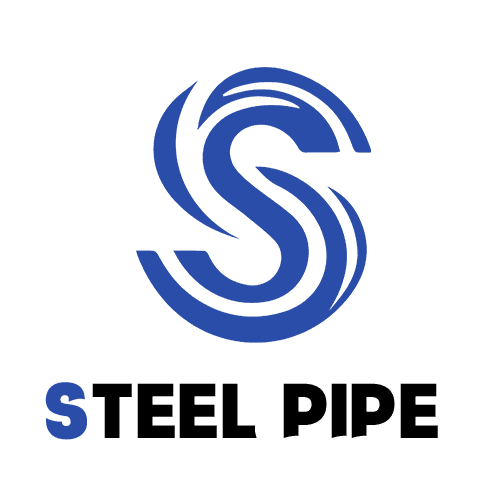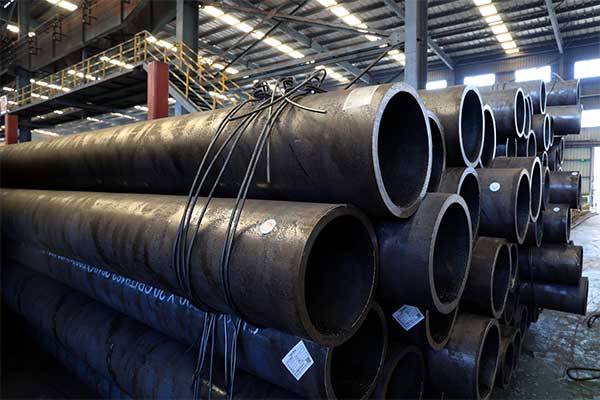Introduction

Seamless steel line pipes are integral components in various industries, providing a reliable solution for transporting fluids and gases over long distances. These pipes offer significant advantages in terms of durability, strength, and overall performance. In this comprehensive guide, we will explore the benefits of seamless steel line pipes, their applications, and how they enhance pipeline systems. This article aims to provide a thorough understanding of seamless steel line pipes and their impact on pipeline integrity and efficiency.
What Are Seamless Steel Line Pipes?
Seamless steel line pipes are manufactured from steel billets or blooms and are characterized by their lack of welded seams. The absence of welds in these pipes eliminates potential points of weakness, making them a preferred choice for high-pressure and high-stress applications.
Manufacturing Process
- Billet Production: Steel billets are produced from molten steel and cooled to a solid state.
- Piercing: The billet is heated and pierced to form a hollow tube.
- Elongation: The hollow tube is elongated to the desired length and diameter using extrusion or rotary piercing.
- Finish Rolling: The pipe undergoes final rolling to achieve the precise dimensions and surface finish.
Key Characteristics
- Uniform Strength: Absence of welds ensures even distribution of stress.
- High Pressure Resistance: Suitable for high-pressure applications due to the lack of weak points.
- Corrosion Resistance: Can be treated or coated for enhanced resistance to environmental factors.
Benefits of Seamless Steel Line Pipes
Seamless steel line pipes offer numerous benefits that enhance the performance and reliability of pipeline systems. Here are the key advantages:
Improved Durability
Seamless pipes have a consistent structure without welds, which contributes to their high durability. This characteristic makes them less susceptible to failures and fatigue under pressure.
Enhanced Strength
The manufacturing process for seamless pipes involves rolling solid billets, resulting in a uniform material structure that provides superior strength and resistance to internal and external forces.
Better Corrosion Resistance
Seamless steel line pipes can be coated or treated to enhance their resistance to corrosion, making them suitable for harsh environments, including those with exposure to chemicals or extreme temperatures.
Reduced Risk of Leaks
The absence of seams reduces the risk of leaks, which is crucial for pipelines transporting hazardous or valuable materials. Seamless pipes are less likely to develop weak spots or cracks compared to welded alternatives.
Longer Service Life
Due to their robust construction and resistance to various forms of degradation, seamless steel line pipes generally have a longer service life, reducing the need for frequent replacements and maintenance.
Common Applications of Seamless Steel Line Pipes
Seamless steel line pipes are used in a variety of industries due to their superior properties. Here are some common applications:
Oil and Gas Industry
- Transportation of Oil and Gas: Seamless pipes are used for transporting crude oil, natural gas, and refined products across long distances.
- Drilling Equipment: Components of drilling rigs, such as drill pipes and casings, are often made from seamless steel.
Construction and Infrastructure
- Structural Supports: Used in building frameworks and structural reinforcements.
- Water Distribution: Essential for pipelines in municipal water systems.
Chemical Processing
- Chemical Transport: Suitable for transporting aggressive chemicals and solvents due to their corrosion resistance.
- Heat Exchangers: Used in heat exchangers and other equipment subjected to high temperatures.
Automotive Industry
- Engine Components: Seamless pipes are used in automotive components that require high strength and reliability.
Comparison of Seamless Steel Line Pipes and Welded Pipes
Understanding the differences between seamless and welded pipes can help in selecting the right type for specific applications. Here is a comparison:
| Feature | Seamless Steel Line Pipes | Welded Pipes |
|---|---|---|
| Manufacturing Process | Formed from solid billets | Formed by welding flat strips or plates |
| Strength | Higher due to uniform material structure | Lower; welds can be weak points |
| Pressure Resistance | Better, suitable for high-pressure applications | Generally lower, suitable for lower pressure |
| Surface Finish | Smooth, minimal defects | May have welds or joints requiring finishing |
| Cost | Higher due to manufacturing complexity | Lower, more cost-effective for large quantities |
| Application | Critical applications, high-pressure systems | General-purpose, lower-stress applications |
Key Considerations for Using Seamless Steel Line Pipes
When choosing seamless steel line pipes, several factors should be considered to ensure optimal performance:
Material Specifications
Select the appropriate steel grade based on the pipeline’s operating conditions, such as temperature, pressure, and exposure to corrosive substances. Common grades include API 5L and ASTM A106.
Pipe Dimensions
Ensure that the pipe dimensions, including diameter and wall thickness, meet the requirements of the specific application. Proper sizing is crucial for maintaining flow rates and pressure levels.
Coating and Treatment
Consider coating or treating the pipes to enhance their resistance to corrosion and abrasion, especially for applications in harsh environments.
Quality Assurance
Implement quality control measures to ensure that the pipes meet industry standards and specifications. Regular inspections and testing can help identify potential issues before they impact performance.
Maintenance and Care for Seamless Steel Line Pipes

Proper maintenance is essential for prolonging the service life of seamless steel line pipes. Here are some maintenance tips:
Regular Inspections
Conduct routine inspections to check for signs of wear, corrosion, or damage. Use non-destructive testing methods, such as ultrasonic testing, to assess the integrity of the pipes.
Cleaning
Keep the pipes clean to prevent the buildup of debris and contaminants. Use appropriate cleaning methods based on the type of fluid or gas being transported.
Preventive Measures
Implement preventive measures to protect the pipes from external damage, such as installing protective covers or barriers.
Repairs and Replacements
Address any issues promptly to prevent further damage. Replace damaged or worn-out pipes to maintain the overall integrity of the pipeline system.
Conclusion
Seamless steel line pipes are a critical component in many industries due to their enhanced durability, strength, and reliability. Understanding their benefits, applications, and maintenance requirements can help ensure that your pipeline systems operate efficiently and safely. By choosing the right seamless steel line pipes and implementing proper maintenance practices, you can optimize the performance and longevity of your pipelines, reducing downtime and operational costs.
FAQ
Q:What are seamless steel line pipes?
A:Seamless steel line pipes are pipes made from solid billets without welding, providing superior strength, durability, and reliability for transporting fluids and gases.
Q:What are the benefits of using seamless steel line pipes?
A:Benefits include improved durability, enhanced strength, better corrosion resistance, reduced risk of leaks, and a longer service life compared to welded pipes.
Q:How do seamless steel line pipes differ from welded pipes?
A:Seamless pipes are formed from solid billets and have no welds, offering higher strength and pressure resistance. Welded pipes are formed by welding strips or plates and may have weaker points at the welds.
Q:What are common applications of seamless steel line pipes?
A:Common applications include oil and gas transportation, construction, chemical processing, and automotive components.
Q:What factors should be considered when selecting seamless steel line pipes?
A:Considerations include material specifications, pipe dimensions, coating and treatment options, and quality assurance measures.
Q:How should seamless steel line pipes be maintained?
A:Maintenance includes regular inspections, cleaning, preventive measures, and prompt repairs or replacements to ensure optimal performance and longevity.




